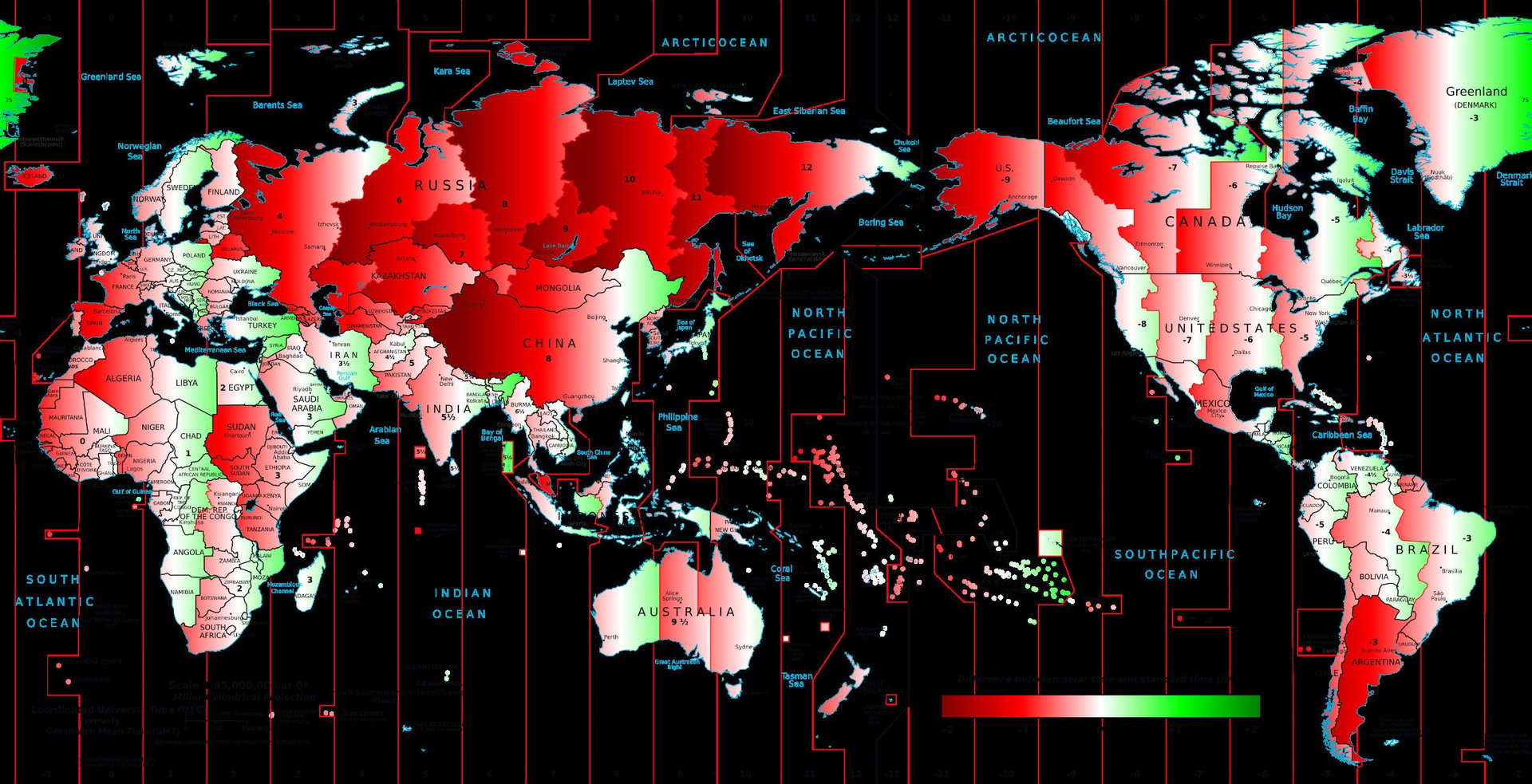The ideal number of time zones is somewhere between one and 1,000
If there’s one thing I’ve learned from writing a about time zones it is that time, whose primary purpose is coordination, is actually very divisive. Stefano Maggiolo, a mathematician and engineer at Google, recently created a map showing how “wrong” our current time zones are. By wrong he means how many hours away from solar time (when the sun is highest in the sky at noon) we are, depending on where you live. This suggests that solar time is the “correct” time, which misunderstands the purpose of time setting.

If there’s one thing I’ve learned from writing a about time zones it is that time, whose primary purpose is coordination, is actually very divisive. Stefano Maggiolo, a mathematician and engineer at Google, recently created a map showing how “wrong” our current time zones are. By wrong he means how many hours away from solar time (when the sun is highest in the sky at noon) we are, depending on where you live. This suggests that solar time is the “correct” time, which misunderstands the purpose of time setting.

The ideal time zone structure should strike a balance between two competing forces: On one hand there is our true solar time, presumed to be the time in sync with our internal circadian rhythms. Maria Konnikova of the New Yorker speculates that not keeping solar time makes people less productive and causes health problems. Alternatively, there are the demands of global commerce. Putting everyone on solar time would mean hundreds of time zones and mass confusion. The purpose of uniformly agreed upon time is to facilitate economic coordination. The fewer time zones we have the easier it is to work together.
If we were all still farmers that rose and slept with the sun, we wouldn’t need to worry about time. But as the economy and technology evolved in the 19th century, the world needed more coordination. The railroad and telegraph required consistent time standards that covered large geographic areas. The fact that people could cheaply light their homes in the evening gave us the ability to define time to suit the changing economy.
If commerce and coordination were the only considerations, the world would have just one time zone. But that takes the needs of business too far and is perhaps self-defeating. When people are too far-removed from their natural cycle, they’re likely to be less productive. China, which is about same size as the continental US, has only one time zone. On Maggiolo‘s map, people in eastern China are furthest from their solar time. According to the Atlantic’s Matt Schiavenza, this has caused confusion and political strife. The Uighur population, that lives in western China, defiantly sticks to a time zone that’s more natural and closer to solar time (which also symbolizes independence from Beijing). The fact that people in the same province using two different times causes confusion undermines the point of the single time zone: simplicity and coordination with Beijing.
If there is a “correct” number of time zones, it is somewhere between the ideal commercial time (one time zone) and solar time (hundreds of time zones). When I wrote that the US should consolidate to two time zones, my purpose was to explore whether we are still striking that balance. Our current time zones were designed in the 1880s. Increased globalization and technology have already taken us further from our solar time (research suggests TV determines our schedules more than the sun). Perhaps our time zones should reflect that. We can move a step closer to the commerce side, which would enhance our efficiency because it better suits our current needs.
Ultimately, finding the right balance may be impossible because time is an arbitrary construct to begin with. What is best for any one person or country depends on culture and patterns of work. But as the economy and technology evolve, it’s a question we should regularly revisit.
Editor’s note: This piece has been corrected to note that the Uighur population lives in western China.